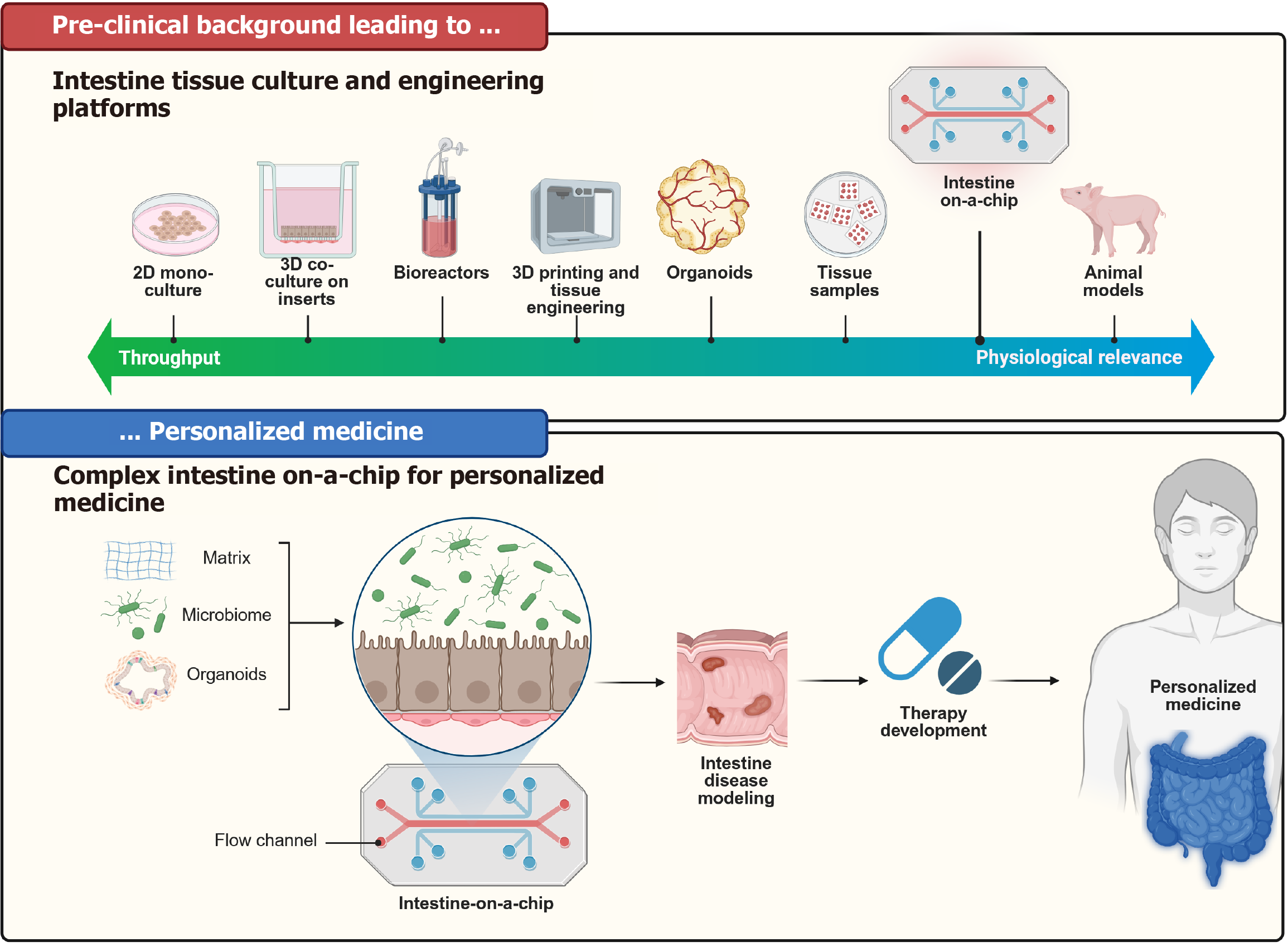Copyright
©The Author(s) 2025.
World J Gastroenterol. Jul 28, 2025; 31(28): 108297
Published online Jul 28, 2025. doi: 10.3748/wjg.v31.i28.108297
Published online Jul 28, 2025. doi: 10.3748/wjg.v31.i28.108297
Figure 6 Representation of the milestones and different techniques of tissue culturing through time.
This diagram illustrates the evolution of intestine tissue culture and engineering platforms leading to the development of intestine-on-a-chip technology for personalized medicine. Pre-clinical background (top panel) showcases a progression from two-dimensional monocultures, three-dimensional co-cultures, bioreactors, three-dimensional printing, organoids, and tissue samples to intestine-on-a-chip and animal models, demonstrating a shift from high-throughput methods to increased physiological relevance. The bottom panel shows the intestine-on-a-chip, which integrates the microbiome, organoids, and extracellular matrix within a controlled flow channel, enabling intestine disease modelling. This facilitates therapy development, ultimately leading to personalized treatments tailored to individual patients. 2D: Two-dimensional; 3D: Three-dimensional.
- Citation: Skok K, Vihar B, Maver U, Gradišnik L, Bräutigam K, Trapecar M, Skok P. Gastrointestinal tract, its pathophysiology and in-vitro models: A “quick” reference guide to translational studies. World J Gastroenterol 2025; 31(28): 108297
- URL: https://www.wjgnet.com/1007-9327/full/v31/i28/108297.htm
- DOI: https://dx.doi.org/10.3748/wjg.v31.i28.108297









